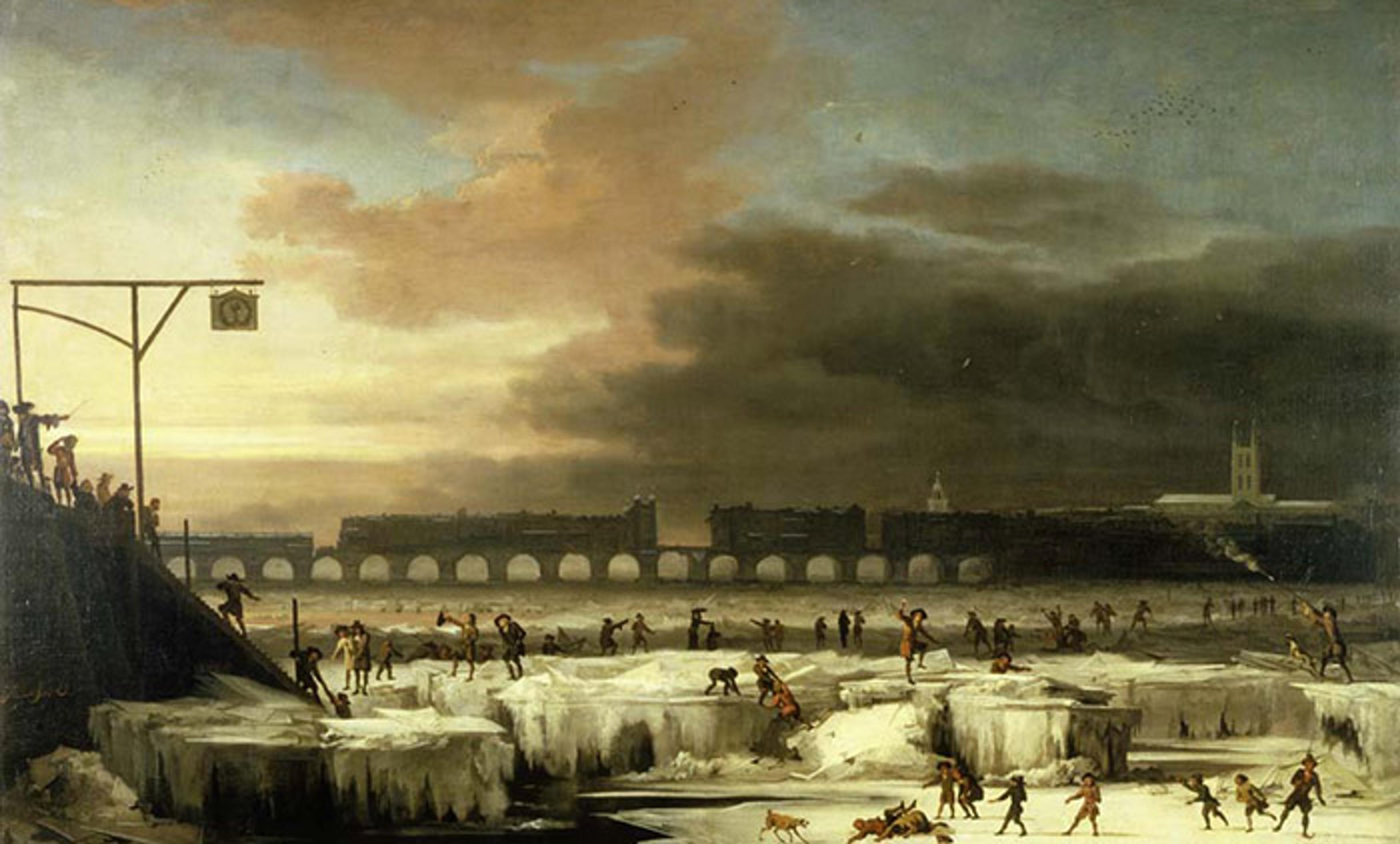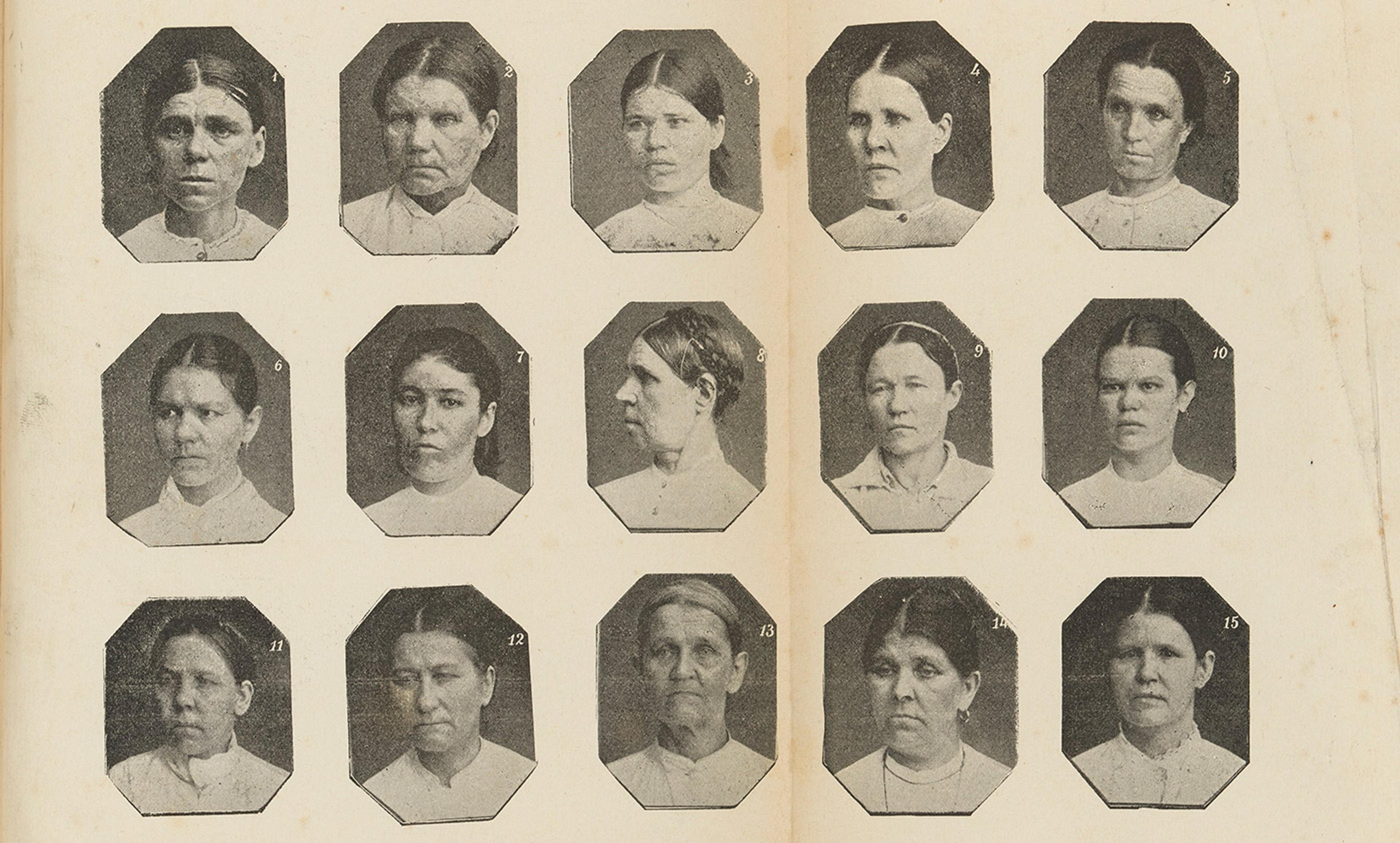
From the Little Ice Age. The Frozen Thames, looking Eastwards towards Old London Bridge (1677) by Abraham Hondius. Courtesy the Museum of London
Many of us think that rapid environmental change is a quintessentially modern crisis. Today, temperatures are soaring, topsoil is washing away, phosphorous is being diluted, forests are retreating, pesticides are sterilising farmland, fertilisers are choking waterways, and biodiversity is plummeting under the onslaught of overpopulated, industrialised societies. Some of these changes are indeed truly new. But many others have deep roots and distant echoes in the early modern period, the years between around 1400 and 1800 when much of the world began to assume its present form. Recently, scientists, geographers, historians and archaeologists have combined expertise and evidence to reveal just how profound early modern environmental transformations really were.
No environmental changes were more far-reaching than those that accompanied the exploits of European explorers and colonisers. From Australia to Cuba, Europeans landed in territories long separated from the Old World. European ships harboured plants and animals, and European bodies carried bacteria and viruses, neither of which had spread beyond Eurasia or Africa. When these organisms made landfall, many multiplied with shocking speed in ecosystems and human communities that had never encountered them before.
The consequences were often catastrophic. In the Americas, for example, the viruses responsible for smallpox and measles swept through so-called ‘virgin soil’ populations – that is, populations with no experience of them. By the 17th century, tens of millions had died. European settlers added to the death toll directly, by murderous violence, or indirectly, by forcing survivors out of communal territories and into gruelling forced labour.
Meanwhile, although some of the invasive species that Europeans purposefully or unwittingly brought with them had little success in unfamiliar ecosystems, many thoroughly outcompeted indigenous plants and animals. Given abundant food, weak competition, few predators or unexploited ecological niches, plant and animal populations can multiply with shocking speed. A single mating pair of rats, for example, can ‘irrupt’ into a population of more than 17 million in just three years!
As rats and other organisms swept through the Americas, they steadily remade environments to more closely resemble those that settlers had left behind in Europe. Most had their greatest success where settlers played an active role. By disturbing or destroying indigenous ways of cultivating ecosystems, legally normalising European patterns of land use, hunting or logging on a vast scale, and plugging into globalising commodity networks, settlers gave the upper hand to invasive species. By the 19th century, Europeans and their nonhuman allies had gutted the vibrant ecosystems and diverse societies that had greeted Christopher Columbus in 1492.
Scientists and geographers have speculated that the death toll mounted so quickly across the Americas that it cooled Earth’s climate. As millions perished, wild plants might have overrun suddenly abandoned fields and woodlands. Expanding tropical forests in particular could have drawn huge amounts of carbon dioxide out of the atmosphere: precisely the reverse of what is happening today, though on a far smaller scale.
If the deaths of millions across the New World did contribute to climatic cooling, it only magnified the natural changes to Earth’s climate system that had long been underway. Beginning in the 13th century, the Sun’s activity started to decline just as modest changes in Earth’s orbit reduced the quantity of solar energy that reached the Northern Hemisphere in the summer. Stratovolcanic eruptions – relatively scarce in the late medieval centuries – now repeatedly lofted sulphur dioxide into the stratosphere, where it reacted with water to create cooling veils of sunlight-scattering dust. Slumping temperatures unlocked feedback loops in soil and sea ice that triggered profound changes in the circulation of the oceans and atmosphere. Some places grew wetter and others drier, often by way of either torrential rains or landmark droughts.
This was the beginning of the Little Ice Age, a complex period of climatic cooling that affected different continents differently but was truly global in scope between the 16th and 18th centuries. In the coldest decades of the Little Ice Age, temperatures across the Northern Hemisphere might have fallen more than 1 degree Celsius below their average in the mid-20th century. By comparison, human-emitted greenhouse gases have now increased global temperatures by nearly 1 degree Celsius, again relative to that mid-20th-century average, though there is a great deal more warming in store.
Cooling and associated precipitation extremes either shortened or interrupted growing seasons in diverse societies across the early modern world. Where harvest failures lasted for more than a few years, food prices soared and starvation often followed. Since malnourished bodies have weakened immune systems, outbreaks of epidemic disease often followed. From present-day Angola to Russia, from India to China, millions responded by migrating from the stricken countryside. Yet migration encouraged the rural spread of disease outbreaks to cities, and made it even harder for agricultural production to recover. As deaths mounted, demands for food and security animated protests and revolts that often took up existing grievances against corrupt and incompetent governments. Rebellions within states helped to inflame tensions between states, and the demands of war typically drew even more resources from the countryside. Millions died across the Old World.
Yet some communities and societies were resilient, even adaptive in the face of the Little Ice Age. Others in fact benefitted from its impact on regional and local environments. The relatively small population and harsh dictatorship of the Tokugawa shogunate in Japan, for example, likely spared the country from the famines of the Little Ice Age. Changes in atmospheric circulation, meanwhile, permitted Dutch ships to reach distant markets more quickly, and gave crucial advantages to Dutch fleets in naval wars. Dutch inventors developed ice skates, fire engines and hoses, horse-drawn barges and icebreakers, ship hulls greased and hardened for sea ice, and many other technologies to cope with new environmental realities.
Do the environmental crises of the early modern centuries have anything to teach us today? Indeed, they do. The worst environmental disasters – the ones that killed the most people – were often deliberately worsened by predatory governments, companies and individuals. Societies that escaped environmental disaster were relatively safe from colonial exploitation, and flexible in the face of shifting environmental circumstances. We face an uncertain future but, like early moderns, there is much we can do to either ease human suffering in the face of environmental upheaval – or make it a great deal worse.





